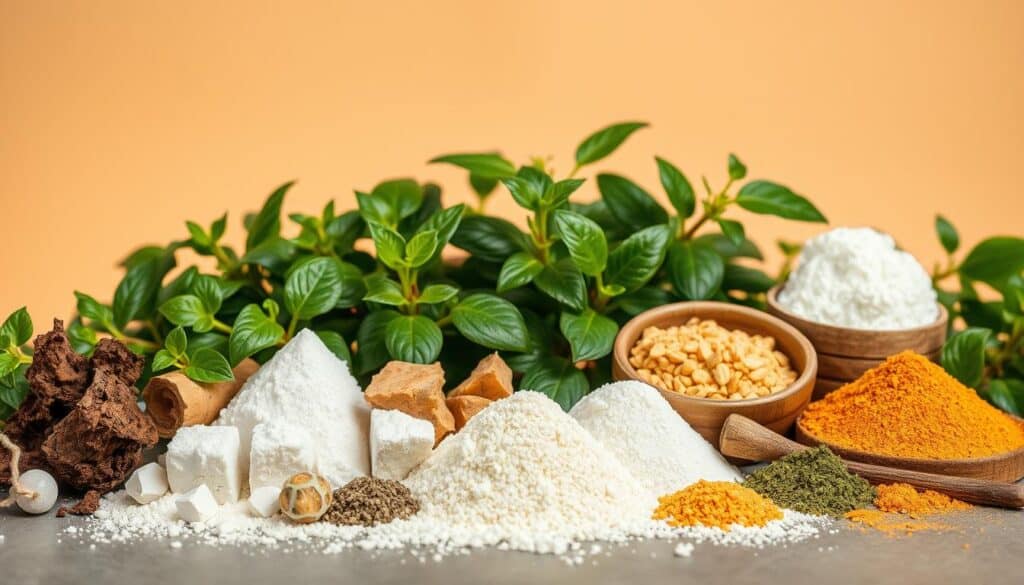Essential Plant Nutrients Guide & Care Tips

About the Game
For gardeners and agricultural pros, knowing about essential plant nutrients is key. This guide gives great plant care tips focusing on managing these nutrients. You’ll learn what plants need and how to fix any shortages. With this info, you can grow healthy plants and get the best harvests.
Understanding Essential Plant Nutrients
Plants need certain nutrients to be healthy and strong. These nutrients help plants grow roots, flowers, and fruits. There are 17 important nutrients that plants need. They get these from the soil and the air around them. Each one has a special job that keeps the plant healthy. If a plant doesn’t get enough of these nutrients, it won’t grow right.
Plants need a lot of some nutrients, like nitrogen, phosphorus, and potassium. These are called macronutrients. Other nutrients, like iron and manganese, are needed in smaller amounts. These are called micronutrients. Knowing what each nutrient does helps us make sure plants get what they need. This way, they can grow the best they can.
Anúncios
The Importance of Nutrient Balance in Plant Growth
Like people who need a healthy diet, plants also need the right mix of nutrients to grow well. Getting the nutrient balance right is key to strong and healthy plants. Each nutrient has a special job. For example, nitrogen helps leaves grow green and big, while phosphorus is important for strong roots and health.
If plants don’t get the right mix of nutrients, it can really hurt their growth. Too much fertilizer can poison plants, slow their growth, and make them get sick easily. This can also harm the environment around the plants.
Anúncios
Gardeners and farmers should watch the nutrient levels closely to help plants grow better and make more food. By keeping an eye on nutrients and fixing levels as needed, plants can get just what they need to do their best.
Types of Plant Nutrients
Understanding plant nutrition is key for keeping plants healthy and productive. There are two main types of nutrients: macronutrients and micronutrients. Each has a major role in plant growth and health.
Macronutrients
Macronutrients are needed by plants in large amounts. These include nitrogen, phosphorus, and potassium. They help with important growth activities like photosynthesis, root growth, and blooming.
If a plant doesn’t get enough of these, it might not grow well or be healthy.
Micronutrients
Micronutrients, though needed only in small amounts, are critical too. Iron, zinc, and manganese are some examples. They support various vital processes such as enzyme production and nutrient uptake.
Plants need a good mix of both macro and micronutrients to thrive. This balance is vital for strong plant nutrition and optimal growth.
Primary Macronutrients and Their Functions
The primary macronutrients are nitrogen, phosphorus, and potassium. They are crucial for the best plant growth. Each one helps with different important plant processes.
Nitrogen (N)
Nitrogen is key for making chlorophyll, which plants need for photosynthesis. It helps plants look lush and green. Without enough nitrogen, older leaves turn yellow and plants don’t grow well.
Phosphorus (P)
Phosphorus is super important. It helps plants use and store energy. This supports root growth, flowers, and fruits. If a plant lacks phosphorus, its leaves may be too green and it might not flower properly.
Potassium (K)
Potassium helps with water use and fighting stress. It’s needed for activating enzymes in plants. Not having enough potassium can cause brown leaf edges and make plants get sick easily. Keeping potassium levels right is key for healthy plants and good yields.
Secondary Macronutrients and Their Roles
Understanding secondary macronutrients is key for plants to thrive. Though they’re needed in smaller amounts, their roles are big. Calcium, magnesium, and sulfur make up these nutrients.
Calcium (Ca)
Calcium helps strengthen plant cell walls. It’s vital for cell stability and growth of roots and shoots. Lack of calcium can cause leaf tip burn and stunt growth.
Magnesium (Mg)
Magnesium is crucial, especially in chlorophyll. It helps plants make energy through photosynthesis. Low magnesium means pale leaves and less plant energy.
Sulfur (S)
Sulfur is essential for making amino acids and proteins. It also helps with enzyme function and metabolism. Without enough sulfur, plants can look yellow and grow poorly.
Signs of Nutrient Deficiencies in Plants
Plants show signs of missing nutrients, important for their health. By looking for these signs, you can find out what’s wrong. This helps fix the problem and get the plants strong again.
Common signs include:
- Yellowing leaves, which can vary by species, often indicates a nitrogen deficiency.
- Stunted growth may suggest a lack of essential nutrients, contributing to overall plant health decline.
- Poor flowering can signal deficiencies, particularly in phosphorus or potassium.
Nitrogen issues often make older leaves die back. Potassium issues can make leaf edges turn brown and curl. Finding these nutrient issues early helps fix them quickly. This lets the plants recover and grow well.
Testing Soil Nutrient Levels
Soil testing is vital for gardeners and farmers to know what their soil has. It shows the important nutrients, pH levels, and how much organic matter is there. All these affect how well plants can grow.
Doing regular soil tests helps you decide what kind of fertilizer to use and how much. If you know what your soil needs, you can avoid adding too much fertilizer. Adding too much can hurt your plants and damage the soil.
Soil testing is key to giving plants the right nutrients and keeping the soil healthy. By understanding what your soil has, you can make smart choices for your plants. This leads to better growth and health for your plants.
How to Correct Nutrient Imbalances
Fixing nutrient imbalances in plants means closely watching them, testing soil, and using the right fertilizer. Looking at plant signs can point out what’s missing. For example, leaves turning yellow might mean not enough nitrogen, and if flowers aren’t blooming well, it could be a phosphorus problem.
Testing your soil tells you what nutrients are in it. This info helps gardeners make a plan that matches what their plants need. Knowing exactly what’s in the soil makes picking the right fertilizer easier. This way, plants get exactly what they need.
There are several ways to fix nutrient problems. Adding the right fertilizers fixes specific shortages. Also, using compost can make the soil better and help plants absorb nutrients easier.
- Follow recommended application rates to prevent over-fertilization.
- Avoid blanket fertilizer application; tailor the approach based on diagnosed needs.
- Monitor plant responses post-application to ensure the effectiveness of interventions.
By following these steps, gardeners can keep their plants healthy by managing nutrients well.
Essential Plant Nutrients: Fertilization Strategies
Healthy plants and optimal growth come from effective fertilization strategies. These include choosing between organic and inorganic fertilizers. Organic fertilizers come from natural sources. They slowly release nutrients, which is good for soil health and boosts soil life.
Inorganic fertilizers provide nutrients fast and are often cheaper. They’re great for quick fixes to nutrient shortages. Mixing both fertilizer types, based on plant needs and soil tests, is the best approach.
Fertilization must be tailored to plant and soil needs. Regular soil tests help spot nutrient needs. Using both organic and inorganic fertilizers makes plants strong and increases crop yield.

Conclusion
For both garden lovers and farming experts, knowing about plant nutrients is key. It helps in growing healthy plants. With the right balance of nutrients and noticing when a plant lacks something, your garden can flourish. These tips let gardeners take good care of their plants, leading to lots of fruits and veggies.
Good fertilization methods do more than just promote plant health. They also support farming that cares for our planet. Both individuals and large farms can adopt these practices. This way, they help not just their plants but also the environment. It’s a win for everyone—the plants, the ecosystem, and all of us.
To wrap up, understanding plant nutrients is vital for every gardener. This knowledge leads to lush, green gardens and farming fields. Knowing what plants need and how to care for them sets you on a path to success. Whether it’s a small patch or a huge farm, it all starts with the basics of plant care.
FAQ
What are essential plant nutrients?
What are the two main types of plant nutrients?
How can I identify nutrient deficiencies in my plants?
Why is it important to test my soil nutrient levels?
What are some effective fertilization strategies?
How can I correct nutrient imbalances in my plants?
What are the primary macronutrients and their functions?
What are secondary macronutrients and their roles?
Game Details
No
No